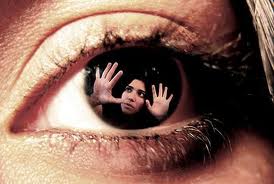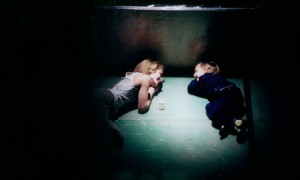Some people don’t understand psychosis very well, even though there’s a lot of information about it that’s available in books, libraries, mental health clinics, and over the internet.
This lack of understanding can affect the way a person thinks of psychosis and how a person talks about psychosis. The media, for example, spend a lot of time trying to say that people with psychosis look scary, and that they do weird or harmful things, but this stereotype just isn’t true.

Unfortunately, because there are so many negative myths about psychosis, many people have the wrong idea of what psychosis might be. Sometimes these myths and stereotypes about psychosis even prevent people from getting the help they need!
Below is a list of some common myths and misinformation about psychosis. There is some information provided to help explain why these myths are wrong.
It’s like in the movies!
People think that lot’s of things they see in the movies are true. Not the fantasy stuff like Harry Potter or Spiderman, but other stuff like Psycho or Me, Myself and Irene. They let what they see and hear in movies colour their ideas about things. Unfortunately, the movies tend to show people with psychosis in very unflattering ways. That’s how misunderstandings start.
Have you ever heard someone say that people with psychosis have a multiple personality disorder? They’re just like in the movie Me, Myself and Irene, right? Well actually, no. Multiple personality disorder is a very rare condition and has nothing to do with psychosis at all.
Movies like Scream, Silence of the Lambs, Psycho or American Psycho seem to suggest another myth: that people experiencing psychosis are psychopaths. The facts are quite the opposite. A psychopath is someone who has a bunch (not just one) of characteristics that are not very nice. They have absolutely no compassion for other people, they are socially manipulative, and sometimes they are criminals or can be violent. A psychopath doesn’t care about anyone but him/herself, and even though may seem like a friend, he/she is really being friendly only to get what they want. This does not describe someone with psychosis.
Click here for a list of movies that do not portray psychosis correctly, and for movies that do.
Psychosis can’t happen to me!
Only bad people get something like psychosis. Three in 100 Canadians will have psychosis at some time in their life. That means, if you are in a room with 100 people, three of those people might have, or have had, or will have, an experience of psychosis. If you go to a concert where there are 1000 people, 30 people at that concert might have experienced psychosis or will experience it!
Because psychosis is a medical condition of the brain that is strongly affected by life’s stresses, almost anyone who has to deal with stress could develop psychosis. In addition, research has shown that if a person has related family members who have experienced psychosis, that person can have a stronger chance of developing psychosis. So people who have a history of psychosis in their families need to be on the watch for potential symptoms!
If psychosis can happen to anyone, and if the vulnerability for psychosis can be passed down through genes, that means that all kinds of people can develop psychosis, in the same way that all kinds of people can develop cancer, or Alzheimer’s disease.
Psychosis can happen to anyone; good people, bad people, funny people, and smart people.
You can “catch” psychosis from someone else
Psychosis isn’t like the flu, it’s not a transmissible infection. You can’t catch it from someone who has it, and if you have experienced psychosis, you can’t “give” it to another person.
Psychosis is a medical condition that develops from an imbalance of brain chemicals, in the same way that cancer develops from an “imbalance” of cancer cells. Click here for more information.
Psychosis is a medical condition that develops from an imbalance of brain chemicals, in the same way that cancer develops from an “imbalance” of cancer cells. Let’s look at this comparison more closely:
The body naturally makes cancerous cells, but our body is usually able to detect these cells and destroy them before they can cause harm. If the body is unable to destroy the cancer cells, or if the cancer cells reproduce very quickly, then the balance of healthy versus sick cells changes. Over time, if cancer cells are able to keep reproducing, the body gets overwhelmed by the growing numbers of harmful cells and begins to show signs of illness. The longer a person with cancer goes untreated, the more serious, or severe, their cancer can become.
Cancer doesn’t happen in all people, even though every person’s body makes cancerous cells. Right now, there is no way to stop a person’ from developing cancer. There are ways to help all people reduce their chances of developing cancer, but people who are at risk will always have to be careful with their health and take precautions. Going for regular checkups, and talking to their doctor about any changes in health are some of the precautions people take to prevent cancer.
The treatments for cancer that are available today usually involve removing or “killing” the harmful cancerous cells, and then preventing them from returning.
Like your body’s cells, your brain’s chemicals are always trying to maintain a healthy balance. It’s natural for our brain chemicals to fluctuate in the same way that it’s natural for the body to produce precancerous cells.
When you wake up in the morning and feel groggy, for example, it’s because your brain’s chemistry is reducing the chemicals it creates to help you sleep, and increasing the chemicals your brain needs to stay awake. Another example of chemical fluctuations is when you feel afraid suddenly, like when a door slams shut unexpectedly. If this has happened to you, you probably noticed that your heart started to pound and you started to feel clammy and nervous. If this has ever happened to you, you have experienced yet another change in the balance of brain chemicals.
Psychosis happens when the fluctuations of brain chemicals changes in such a way that it overwhelms the healthy balance of the brain.
Like cancer, there is no way to stop a person from developing psychosis, and like cancer, psychosis can get worse the longer it is left untreated. But it’s not something you can “catch!” There are ways to help reduce the chances of developing psychosis for persons who are at risk, and there are reliable ways to treat psychosis. And no, no one is going to cut into your brain or try to kill your brain cells! The treatments for cancer and the treatments for psychosis are very different, since they are different medical conditions. See the “Medication” section if you want to learn how psychosis is treated.
People with a condition like psychosis do bad things
With all the news stories we see of people with psychosis who do bad things, we might think that a lot of people with psychosis are criminals or something like that.
The truth is it is very rare for people with psychosis to commit serious crimes. In fact, many people with psychosis are very shy and can be fearful of others.
Another truth is that people with psychosis who do do bad things usually do those things as a result of bad habits. Some people with psychosis, for example, are addicted to drugs. In order to get drugs to feed their addictions, like other people with addictions people with psychosis can make some bad decisions, and take risks they ordinarily wouldn’t take if they were healthier and able to make better choices.
The unfortunate reality is that people who have psychosis are more often the victims of crime than the perpetrators of crime, but the media never tells us this fact. Sadly, people with psychosis are more likely to be robbed, abused, assaulted, or raped than people without psychosis.
The best way to help a person with psychosis be safe, healthy, and make better life choices is to support them in getting better!
If you have psychosis, you’ll never be a “normal” person
This myth is an important one to talk about, because it crops up a lot in the media and in everyday discussions. This myth can have a serious impact on how a person with psychosis feels about themselves, and usually that impact is a harmful one.
It’s important to ask: What is “normal?” Does “normal” look like something? Do “normal” people do or say any special things? If you had to pick the most “normal” person in a room, who would that be? Why is that person the most “normal?” Is there anything that might make that person “not normal?”
The more you explore the idea of “normal” the more you will come to understand that normal is a word that describes things that some people often do, and not things that all people always do.
It’s likely that the more you think about the person or people who can be described as “normal” in your life and what they do or how they do it, the more you’ll notice that those people have all sorts of quirks and habits that make them somehow different from others. Really, it’s more “normal” to seem different and to feel different from others than it is to feel or look like you fit in 100% of the time.
Now, if we’re going to talk about “normal” as the things that people often do, there are some things that Canadian people do that are pretty common:
- People often complete high school, not all people, but most of them
- People often have a job, or want to have a job
- People often want to have relationships, and often try to make them happen.
Are you interested in any of these things? If you say yes to even one of them, you’re a pretty “normal” person.
However, psychosis can interfere with how a person does these things, like finishing school, working, or developing relationships because the symptoms can disrupt the routine of everyday life. And so while most Canadians graduate from high school with their friends, for example, a person living with psychosis might find that schoolwork is a little more difficult, or that finishing school takes a little longer.
At first it can take a little longer to do things if a person has psychosis. Being slowed down by any health condition can make one feel left behind when they compare themselves to their friends. But over time, with patience and perseverance, and sometimes with a little help, life just starts to move forward again and it’s easier to catch up.
And just so everyone knows, most people feel like they’re being left behind at some point in their life. Feeling left behind, or out of the loop, is a pretty “normal” experience too!









